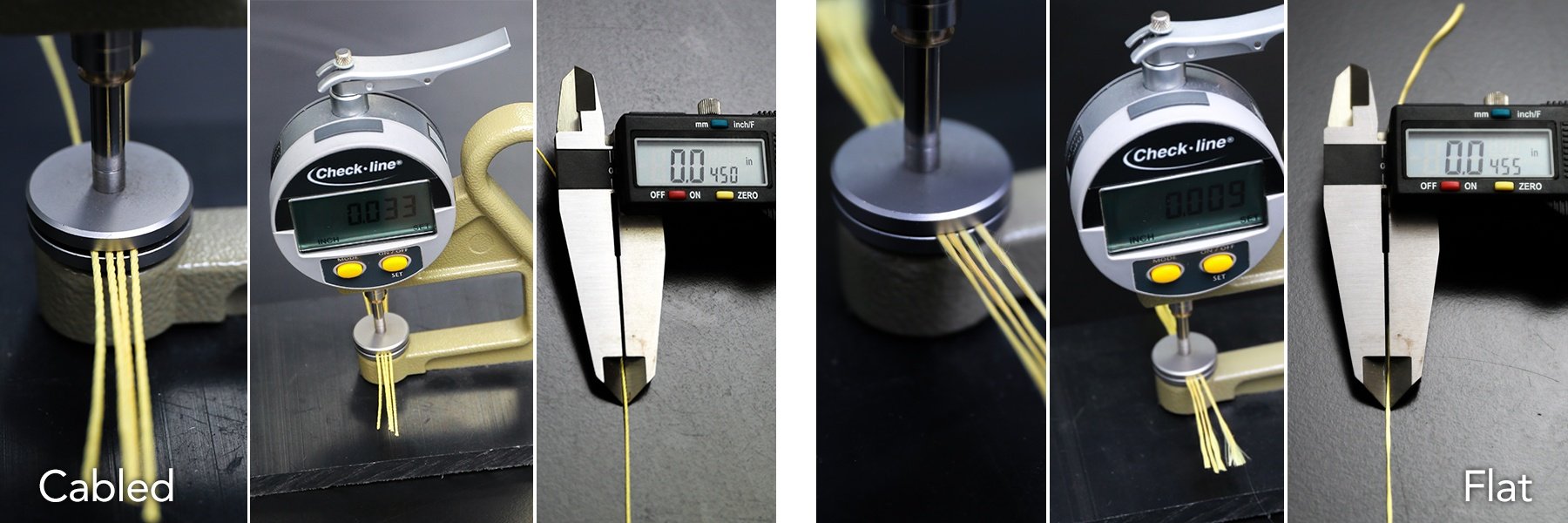
The relationship between yarn diameter and yarn size can be critical in determining the yarn or thread size needed to meet your requirements. A yarn or thread’s diameter and width can will affect the coverage of a yarn in a hose, how large of a yarn will fit into a wire or cable, and is important in determining the needle size required in industrial sewing applications.
The size (denier, dtex, tex, etc.) of a particular yarn or thread can be used to estimate the overall diameter and is helpful in determining what yarn size will work best in your application.
How to estimate the diameter of yarn or thread
There are several variables needed to estimate a yarn or thread diameter, the tex size and fiber density. If you do not know the tex size, you will need to convert whatever yarn designation size you have to the tex size. If the yarn or thread size you are trying to estimate is listed in denier or dtex size, you can use the quick conversion chart below to convert to tex.
| Yarn Size Conversion Chart | |||
| Convert To | tex | decitex (dtex) | denier (den) |
| tex | 10* tex | 9* tex | |
| decitex (dtex) | dtex/10 | dtex * 0.9 | |
| denier (den) | den/9 | den/ 0.9 | |
To make things easier, you can also use our conversion calculator in the link below to convert any yarn count (size designation) to tex.
Once you have the tex size, you will also need to know the fiber type so you can determine the fiber density. Some of the more common fiber types and densities are listed below.
Common Industrial Fiber Densities
| Material | Density (g/m3) |
| UHMWPE | 0.94 |
| Polypropylene | 0.946 |
| Nylon 6 | 1.13 |
| Nylon 6,6 | 1.14 |
| Polyester (PET) | 1.38 |
| Aramid | 1.44 |
| PTFE | 2.15 |
| E-Glass | 2.58 |
Now you are ready to use these variables in the following equation to estimate diameter (mm) based on a given yarn size (tex):
A = Yarn Diameter (mm)
B = Fiber Density (g/cm3)
C = Yarn Size (tex)

For example, if you wanted to estimate the diameter (mm) of 1000 denier polyester, you would take the following steps:
- Convert 1000 denier to the equivalent size in tex - 1000 dn / 9 = 111.11 tex
- Determine density of polyester from the chart given above. Polyester density = 1.38 g/cm3
- Plug these into the formula as it is illustrated below and you will come up with 0.32mm
%20of%201000DN%20Polyester.png?width=472&height=82&name=Formula%20for%20diameter%20(mm)%20of%201000DN%20Polyester.png)
The diameter of a particular yarn or thread is sometimes all you need to know what yarn size will meet certain requirements however, most of the time there are other properties that will impact what yarn size and fiber type will work best in an application. Service Thread supplies multiple manufacturers industrial yarns and threads, and has broad knowledge about yarn and fiber application best practices. Let us know if you need help and our expert yarn engineers can help recommend the best fiber type and product construction for your application.




